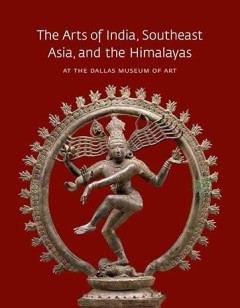Ditapis dengan
E-book A History of Museology
Is museology a theory or a set of practices? Is it a science or just museum work? Is it the same as museum theory? Or is it autonomous from the museum? Is it a philosophy or is it based on social experimentation? Are we evolving towards the path of a metamuseology? If so, what are the boundaries of this ‘museology’ that has shown to have no boundaries in the past decades of theoretical rese…
- Edisi
- -
- ISBN/ISSN
- 9789290124566
- Deskripsi Fisik
- 232 hlm
- Judul Seri
- -
- No. Panggil
- 069 CHU a
E-book Key Concepts of Museology
What is a museum? How do we defi ne a collection? What is an institution? What does the term ‘heritage’ encompass? Museum professionals have inevitably developed answers to questions such as these, which are fundamental to their work, compiled according to their knowledge and experience. Do we need to reconsider these? We believe so. Museum work shifts back and forth between practice and th…
- Edisi
- -
- ISBN/ISSN
- 9782200253981
- Deskripsi Fisik
- 90 hlm
- Judul Seri
- -
- No. Panggil
- 069 DES k
E-book Working Through Colonial Collections
his research was funded by the Alexander von Humboldt Foundation as part of the research award for Sharon Macdonald’s Alexander von Humboldt Professorship, and was carried out at the Centre for Anthropological Research on Museums and Heritage (CARMAH) at the Department for European Ethnology, Humboldt-Universität zu Berlin. I also received financial support from the Ge…
- Edisi
- -
- ISBN/ISSN
- 9789461664242
- Deskripsi Fisik
- 320 hlm
- Judul Seri
- -
- No. Panggil
- 069 VON w
E-book Virtual Museums – A Plea : Around the Clock, Around the World
igitalisation and virtual worlds are increasingly permeating the cultural sector and the creative industries. When it is difficult for cultural offerings to find their audience, they can or must actively reach out to their audience. This also applies to museums, which can find and retain audiences in different ways and with different formats. Even a virtual museum is fundamentally a museum. …
- Edisi
- -
- ISBN/ISSN
- 9783422802377
- Deskripsi Fisik
- 103 hlm
- Judul Seri
- -
- No. Panggil
- 708 VIR v
E-book The Museum Accessibility Spectrum : Re-imagining Access and Inclusion
Central to the practice of the modern museum sector are the principles of access, inclusion, diversity, sustainability, and community participation (ICOM, 2022). As the curators of our cultural and social histories, the heritage sector is morally and legally required to provide reasonable adjustments to ensure equitable access or all people. The dictionary definition of access is the me…
- Edisi
- -
- ISBN/ISSN
- 9781003382713
- Deskripsi Fisik
- 313 hlm
- Judul Seri
- -
- No. Panggil
- 069 EAR t
E-book The Aftermaths of Participation
It has been seven years since the so-called refugee crisis in Europe, andwarfarecontinuestoforcepeopletoleavetheirhomelandstosettleelsewhere.AsIamwritingthis,inAprilof2022,RussiantroopsaretearingapartUkraineand the lives of its people, forcing many people to flee their homes. Forcedmigration is not temporary phenomenon, and historical, ethnographic andcity museums will –one wayor another –c…
- Edisi
- -
- ISBN/ISSN
- 9783839464113
- Deskripsi Fisik
- 273 hlm
- Judul Seri
- -
- No. Panggil
- 069 BOE t

E-book The Arts of India, Southeast Asia, and the Himalayas at the Dallas Mus…
In recent years, the Dallas Museum of Art has expanded its collection of South Asian art from a small number of Indian temple sculptures to nearly 500 works, including Indian Hindu and Buddhist sculptures, Himalayan Buddhist bronze sculptures and ritual objects, artwork from Southeast Asia, and decorative arts from India’s Mughal period. Artworks in the collection have origins from the former…
- Edisi
- -
- ISBN/ISSN
- 9780300149883
- Deskripsi Fisik
- Dallas Museum of Art
- Judul Seri
- -
- No. Panggil
- 708 BRO t

E-book The Art of Museum Exhibitions: How Story and Imagination Create Aesthe…
Leslie Bedford, former director of the highly regarded Bank Street College museum leadership program, expands the museum professional’s vision of exhibitions beyond the simple goal of transmitting knowledge to the visitor. Her view of exhibitions as interactive, emotional, embodied, imaginative experiences opens a new vista for those designing them. Using examples both from her own work at th…
- Edisi
- -
- ISBN/ISSN
- 9781611323108
- Deskripsi Fisik
- 168 halaman, ilus.
- Judul Seri
- -
- No. Panggil
- 069.5 BED t
E-book What Photographs Do: The Making and Remaking of Museum Cultures
What are photographs ‘doing’ in museums? Why are some photographs valued and others not? Why are some photographic practices visible and not others? What value systems and hierarchies do they reflect? What Photographs Do explores how museums are defined through their photographic practices. It focuses not on formal collections of photographs as accessioned objects, be they ‘fine art’ or…
- Edisi
- -
- ISBN/ISSN
- 9781800082984
- Deskripsi Fisik
- 357 hlm
- Judul Seri
- -
- No. Panggil
- 069 EDW w
E-book Heritage Dynamics : Understanding and adapting to change in diverse he…
How is heritage created and re- created, shaped and reshaped, formed, reformed and transformed – or even reborn? Heritage in all its forms endures a lengthy and dynamic journey of emergence, transformation, decline and revival. An object displayed within a museum showcase may have travelled through various places and changed uses more than once before acquiri…
- Edisi
- -
- ISBN/ISSN
- 9781787358331
- Deskripsi Fisik
- 255 hlm
- Judul Seri
- -
- No. Panggil
- 069 FOU h
 Karya Umum
Karya Umum  Filsafat
Filsafat  Agama
Agama  Ilmu-ilmu Sosial
Ilmu-ilmu Sosial  Bahasa
Bahasa  Ilmu-ilmu Murni
Ilmu-ilmu Murni  Ilmu-ilmu Terapan
Ilmu-ilmu Terapan  Kesenian, Hiburan, dan Olahraga
Kesenian, Hiburan, dan Olahraga  Kesusastraan
Kesusastraan  Geografi dan Sejarah
Geografi dan Sejarah